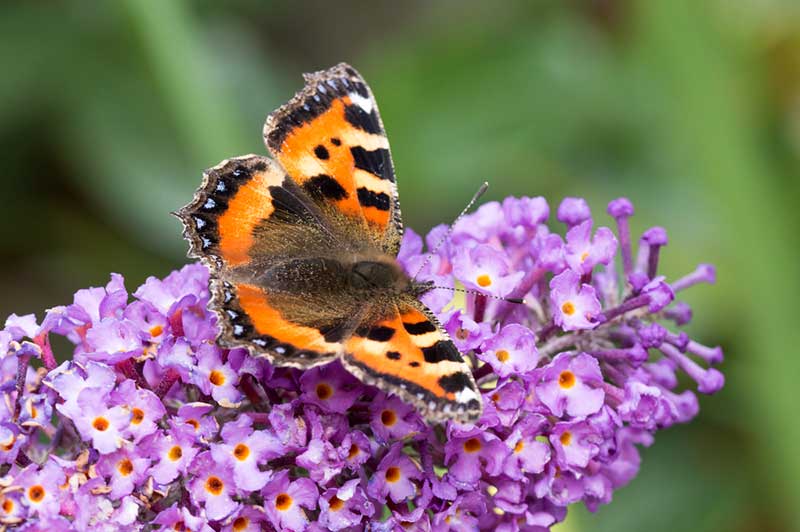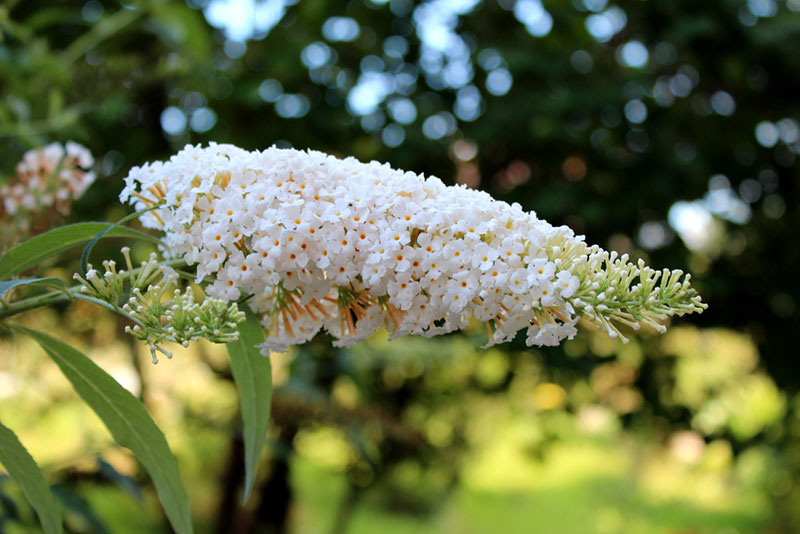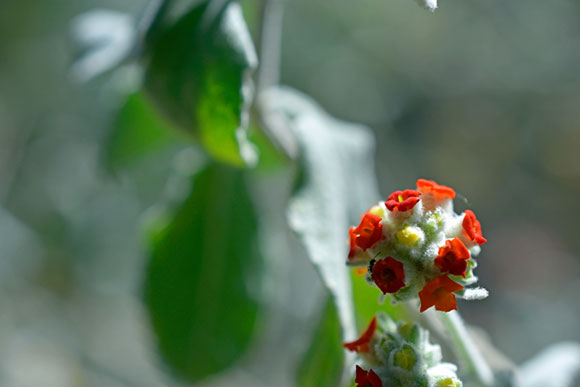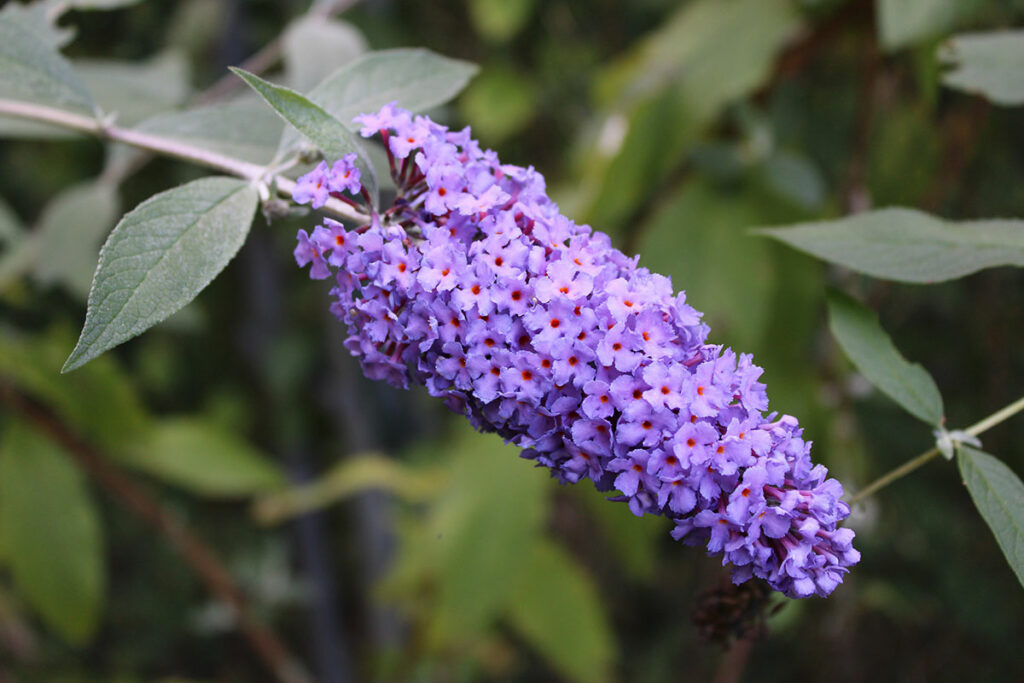
Butterfly bush (its official scientific name is Buddleja davidii, with the “j” silent, but that’s often spelled as Buddleia davidii now) is a pretty, aggressively spreading shrub that produces large panicles of tiny, brightly colored flowers that attract butterflies. In the past, butterfly bush was considered a storied member of the pollinator-garden club, but B. davidii has dropped off many of those best-of lists due to its growth habit. No fear, however, if you were hoping to plant it; there are sterile cultivars available as well as two Buddleia species that are native to the U.S. Southwest.
The butterfly bush that most people think of is from China and grows very well in North America. It grows so well, in fact, and is so hardy – and crucially, it grows without any real threat from pathogens or predators – that it is now classed as invasive in much of the continent. It is considered a noxious weed in Washington and Oregon, and non-sterile varieties are not allowed to be sold in Oregon. It has spread very aggressively in California, in many states on the East Coast, and in Appalachia. England and New Zealand also have problems with invasive butterfly bush.
Despite its name, butterfly bush is not a host plant for butterflies. Their caterpillars can’t use the plant for food and shelter like they do with milkweed. Adult butterflies can use the nectar for nourishment, and the plant does attract butterflies. But it’s not a good substitute for milkweed, especially if you’re trying to help monarch butterflies.
Plant sterile cultivars that are approved for sale in your state, deadhead non-sterile cultivars militantly in fall, plant those Southwest-native species, and, if you’re in an area where it’s known to grow wild, remove seedlings that you find and send them and pruning/deadheading debris to a landfill – never dump the debris where it could take root and grow!

Overall, butterfly bush will grow in USDA zones 5-10. It needs full sun and attracts not just butterflies but bees and birds as well (mainly hummingbirds). The flowers bloom in summer and may be pink, magenta, purple, blue, yellow, or orange; they can be quite fragrant with some smelling like honey. Both dwarf and non-dwarf cultivars are available, with full-grown plants ranging in height from 1 1/2 feet to 10 feet tall. It is both deer- and mostly drought-resistant. Some varieties are rabbit-tolerant. Flower panicles may stand erect or drape down in a graceful arc.
Water and Soil Needs
Like many plants, butterfly bush needs regular water during its first year in your garden. In subsequent years, after the plant has become established, you can reduce watering to as needed. Note that when temperatures get really hot, you may have to increase the amount of water or the frequency with which you water. Soil needs to be well-draining. Butterfly bush can grow in humid regions, but it shouldn’t sit in water or poorly draining soil.
Deadheading and Pruning
If you have a non-sterile cultivar of butterfly bush, you must deadhead it. Once the panicles fade, snip those off and do not let any flowers rest on the ground. Deadhead by fall; do not let the panicles sit over winter as that allows them time to develop seeds. Your best bet is to remove faded panicles immediately and ensure that there are none left anywhere on the shrub in fall. If you have a sterile variety, deadheading isn’t necessary, although it’s a good idea to do it to encourage reblooming and make the plant look better.
Prune old growth off, preferably in late fall; if you’re in a colder area, cut back to the ground in late winter and mulch around the roots to 6 inches deep. Do not cut new wood in late winter and spring.

A Look at Two Southwest-Native Cultivars
Native plants offer a nice balance of surviving well in local environments and having just enough predators and local plant competition to keep them under control. If you live in the Southwest and Intermountain West, look at B. marrubifolia (orange woolly butterfly bush; alternate species name spelling of marubiifolia) and B. utahensis (Utah butterfly bush, Panamint butterfly bush).

Orange woolly butterfly bush is native to the Chihuahua Desert and grows in climates resembling what you’d find in southwestern Texas and New Mexico. It’s not as showy as B. davidii, but its orange and yellow flowers grow in cute balls on stalks that can grow to 3 feet. This is a cold-hardy plant that can grow in limestone soils if needed. Soil does need to be well-draining; this is a desert plant and shouldn’t be left in soggy soil.
Utah or Panamint butterfly bush is native to desert areas of Utah, California, Arizona, and Nevada, growing in hot climates but at higher altitudes. It’s often found growing in the same areas as Joshua trees. If you can provide the right growing conditions – well-draining soil, hotter temperatures, and not that much water, this species could be a good choice. It’s harder to grow once you get into more temperate conditions.





